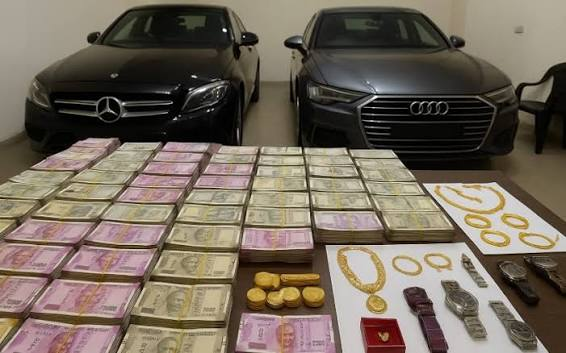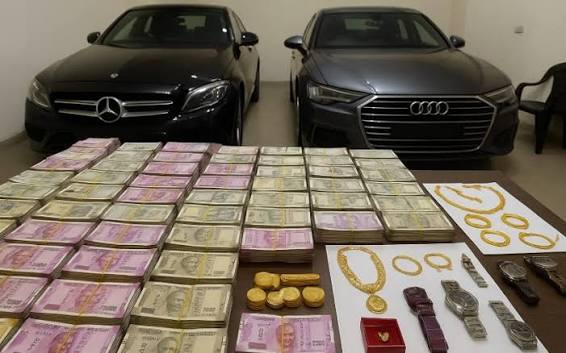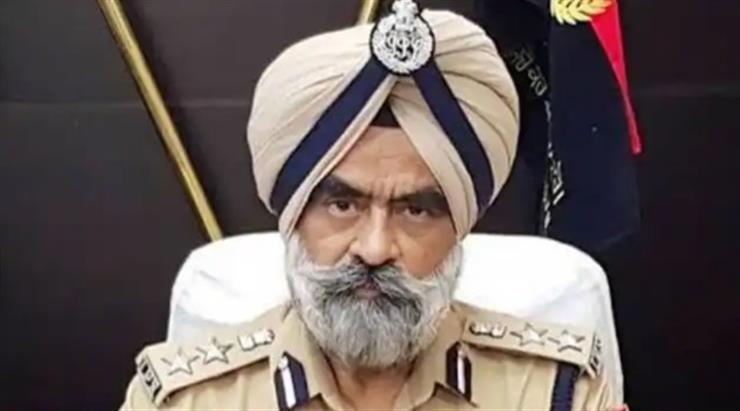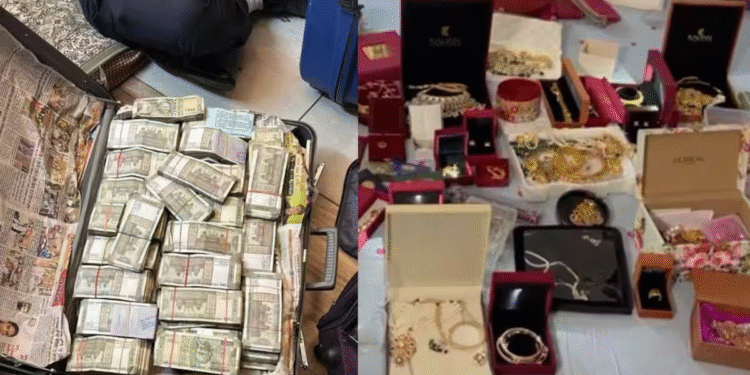CBI nabs Punjab DIG in major corruption case; seizes ₹5 crore in cash, luxury cars, and high-end watches during raids linked to graft allegations
On Thursday, the Central Bureau of Investigation (CBI) struck a dramatic blow against high-level corruption in Punjab: it arrested Deputy Inspector General (DIG) Harcharan Singh Bhullar, currently posted in the Ropar Range, on charges of graft. The scale of the recoveries—nearly ₹5 crore in cash, luxury vehicles, gold, and high-end watches—has sent shockwaves through the corridors of power and the public alike.
This case, emerging from a complaint lodged by an ordinary scrap‑dealer, has peeled back layers of alleged extortion, abuse of power, and systematic misconduct within the police hierarchy. Below is a deep-dive account of the arrests, the recovered assets, the allegations, the legal and institutional ramifications, and why this case matters far beyond Punjab.
The Arrest: Caught Red-Handed
The Complaint and Setup
The drama began with a written complaint filed on October 11 by Akash Batta, a scrap dealer in Fatehgarh Sahib, alleging that DIG Bhullar had been coercing him for bribes in exchange for “settling” an FIR lodged against his business. According to the complaint, Bhullar demanded ₹8 lakh to quash the case and also insisted on recurring monthly payments—an illicit “settlement” scheme to maintain his protection over the complainant’s business.
The CBI took notice, launched preliminary surveillance, and mapped out the corruption network. The agency identified a middleman, known as Krishna, alleged to be Bhullar’s conduit for extortion. In a well-planned sting operation in Sector 21, Chandigarh, Krishna was caught red‑handed accepting ₹8 lakh from Batta. Simultaneously, the CBI made a controlled call to Bhullar, during which he allegedly acknowledged the payment and instructed Krishna and Batta to meet him.
With the trap set, CBI teams swooped into action. Bhullar was arrested from his Mohali office after surveillance confirmed his involvement. Notably, no Punjab Police personnel were included in the raiding team to maintain the operation’s impartiality.
Arrest Details & Custody
- DIG Bhullar, a 2009-batch IPS officer, was apprehended Thursday afternoon from his office in Mohali (Ropar Range).
- The middleman Krishna was arrested separately in Chandigarh during the extortion handover.
- Both accused were scheduled to be produced before a special CBI court the following day.
- The CBI also carried out simultaneous searches at multiple premises linked to Bhullar—his office, residence, and other properties in Punjab and Chandigarh. Today+5mint+5
- To ensure no leakage or interference, the CBI kept Punjab Police personnel out of the raiding squads.
The swift and well-coordinated arrest underlines how high-stakes investigations against senior officials are being conducted with increasing rigor.
Seizures That Stun: Assets & Evidence

The scale of material and financial resources recovered in the raids instantly turned public attention to the enormity of alleged corruption. The CBI’s makeshift haul list includes:
- ₹5 crore (approx.) in cash (ongoing counting).
- 1.5 kg of gold and jewellery.
- Keys to two luxury cars: a Mercedes and an Audi.
- 22 high-end wristwatches.
- Locker keys and documents of immovable property holdings across Punjab.
- Imported liquor (40 litres).
- Weapons and ammunition: a double-barrel gun, pistol, revolver, airgun, cartridges.
- From the middleman Krishna’s premises: ₹21 lakh in cash.
Local reports suggest that the counting and logging of assets are ongoing—and that more recoveries may emerge as forensic and financial investigations intensify.
Visuals & Symbolism
The seizure imagery—luxury vehicles, wads of currency, opulent jewellery and watches—has become iconic. It underscores the gravity of betrayal when law enforcers amass such wealth beyond plausible legal means. The juxtaposition of policing authority and ill-gotten opulence is nothing short of striking.
The Man Behind the DIG Title: Harcharan Singh Bhullar
Career Trajectory & Reputation
Bhullar belongs to the 2009-batch of IPS officers. Prior to his Ropar posting, he served as DIG in the Patiala Range and held roles as Joint Director in the Vigilance Bureau, and as Senior Superintendent of Police in key districts like Mohali, Sangrur, Fatehgarh Sahib, etc.
He also headed the Special Investigation Team probing alleged drug links associated with SAD leader Bikram Singh Majithia, positioning him in the spotlight of Punjab’s anti-narcotics crackdown.
Interestingly, Bhullar is the son of former Punjab DGP Mehal Singh Bhullar, which adds a layer of legacy to the profile.
Despite this pedigree, his reputation was largely low-profile. He cultivated an image of being a stern, silent professional—someone less likely to attract public limelight. The arrest now dramatically rewrites that narrative.
Allegations & Modus Operandi
- The primary allegation is of demanding a ₹8 lakh bribe from Batta for settling an FIR and ensuring protection from coercive police action.
- Further, he is accused of enforcing monthly extortion payments—in effect establishing a protection racket under the guise of “settlement” or “security.”
- During the controlled call, he is alleged to have directed the middleman to collect the money.
- The complaint, subsequent verification, and actions have implicational warranties under Section 61(2) of the Bharatiya Nyaya Sanhita, 2023 and Sections 7 & 7A of the Prevention of Corruption Act, 1988 (as amended 2018).
Given the assets recovered, investigators are probing potential money laundering, benami holdings, and unexplained wealth accumulation—all central to assessing the scale of criminality beyond mere bribery.
Legal & Institutional Implications
Charges & Case Framing
The FIR registered by CBI cites multiple statutes:
- Bribery and criminal misconduct under the Prevention of Corruption Act
- Unexplained/Disproportionate assets and money laundering implications
- Conspiracy and extortion under general criminal statutes
- Granting undue benefits by virtue of office or abusing official power
If the prosecution succeeds, Bhullar could not only face imprisonment but also forfeiture of seized assets and disqualification from public service.
Ensuring Justice Without Prejudice
Authorities have to tread a delicate path:
- Fair trial must be ensured, despite roaring public sentiment
- Due process, including status of remand, production before court, access to legal representation
- No misuse of power in investigation; oversight mechanisms essential
- Independent forensic audits and money trail analysis
- Institutional reform to prevent recurrence
The fact that the CBI excluded Punjab Police personnel from its operations speaks to the seriousness of maintaining impartiality in high-profile probes.
Reactions: Political, Media & Public

Political Fallout
This case will test the will of the state government and the central leadership to take action—even when misconduct resides within an influential circle. Political parties are likely to push narratives of selective targeting or cover-ups, depending on affiliations and optics.
Some possible pressure points:
- Calls for full disclosure of Bhullar’s assets and income during his career
- Demand for departmental inquiry within Punjab Police to trace any complicity
- Calls for similar actions against other officers under suspicion
- Demand for systemic reform, not just headline arrests
Media & Civil Society
Media coverage has been intense, with headlines underlining the magnitude of the recovery. This case is likely to be used as a benchmark for investigating corruption in law enforcement.
Civil society groups and anti-corruption bodies will push for transparency: immediate public audit, regular updates, and a zero-tolerance approach to policing corruption.
Public Sentiment
Public reaction mixes shock, anger, cynicism, and hope:
- Shock and betrayal: When a top police officer is implicated, it shakes public trust
- Cynicism: “If a DIG can do this, what about the many lower-level officers?”
- Hope: This arrest can be a signal that nobody is above accountability
Social media platforms are abuzz, with users pointing to the brazen scale of the loot and questioning how many more similar cases lurk unnoticed.
What Happens Next: The Road Ahead
- Judicial Process
- CBI must present charges and evidence in court
- Bhullar and Krishna will seek bail, though high-severity cases often face tight restrictions
- Prosecution must clearly trace each asset to illegal sources
- Forensic & Financial Investigation
- Bank records, asset transfers, shell companies
- Benami property linkages
- International flows, if any
- Institutional Internal Probes
- Punjab Police must examine internal oversight failures
- Review of departmental transfers, promotion records
- Examine whether other officers were complicit or negligent
- Policy Reforms
- Strengthen anti-corruption units within police
- Enhance transparency in police asset declarations
- Whistleblower protection for officers exposing wrongdoing
- Better checks & balances within prosecution and investigation agencies
- Public Audits & Oversight
- Civil society monitoring committees
- Regular public updates
- Encouraging citizen participation in oversight
Significance & Broader Lessons
- High-level accountability: This arrest shows that even senior officials can be held to account—if investigations are conducted firmly.
- Systemic corruption: The scale of loot suggests corruption was not isolated but woven into departmental practices.
- Preventive measures: Merely punishing after the fact is insufficient; preventive institutional design is crucial.
- Public trust: For the police to function as a neutral institution, public confidence must be restored.
- Deterrence factor: If Bhullar’s case is seen to result in meaningful punishment, it could serve as a deterrent to others.
Conclusion

The CBI’s arrest of DIG Harcharan Singh Bhullar marks a watershed in recent years in the fight against corruption within India’s law enforcement apparatus. The sheer magnitude of the seized assets—crores of cash, luxury cars, gold, and watches—makes it more than just another bribery case. It’s a symbolic blow to entrenched privilege and a stern reminder that no post is inviolable.
But this is just the opening act. The real test lies ahead: will the justice system deliver accountability? Will institutional reforms follow? And will this moment restore—or further erode—public trust in the police?
For now, the spotlight is on the judiciary, the investigating agencies, and the Punjab government. The country watches, waits, and hopes that this high-profile case doesn’t end as yet another scandal that vanishes into legal limbo.
Also Read : Nestle India Q2 Results: Volume growth in high-single digits; Domestic sales highest in any quarter















 Categories
Categories









